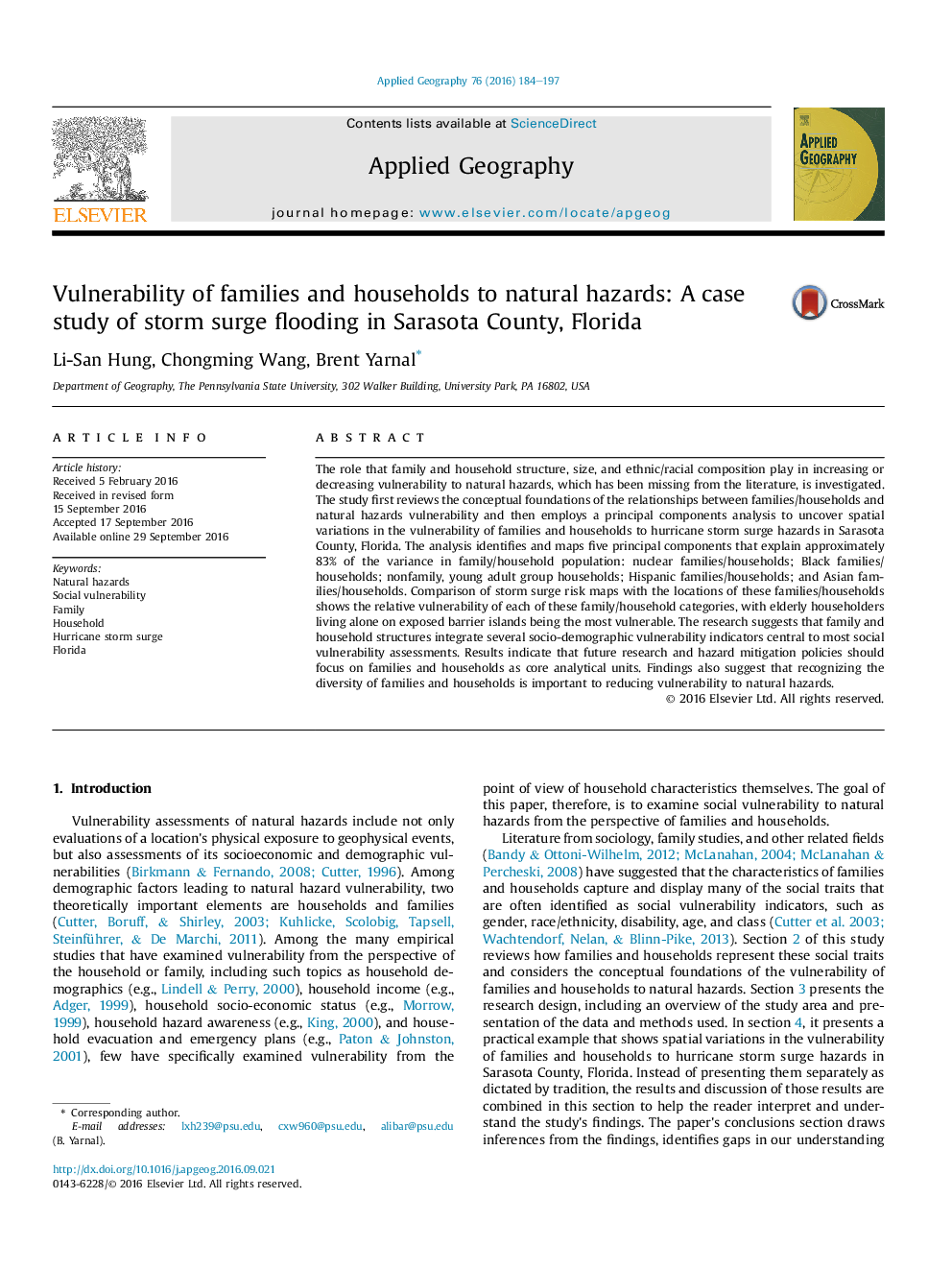| کد مقاله | کد نشریه | سال انتشار | مقاله انگلیسی | نسخه تمام متن |
|---|---|---|---|---|
| 6458552 | 1421041 | 2016 | 14 صفحه PDF | دانلود رایگان |
- The vulnerability of families and households to storm surge flooding is examined.
- Principal Component Analysis revealed 5 components central to social vulnerability.
- Families and households interact with critical social vulnerability indicators.
- Future vulnerability research/policy should focus on families and households.
- Recognizing the diversity of families and households could reduce vulnerability.
The role that family and household structure, size, and ethnic/racial composition play in increasing or decreasing vulnerability to natural hazards, which has been missing from the literature, is investigated. The study first reviews the conceptual foundations of the relationships between families/households and natural hazards vulnerability and then employs a principal components analysis to uncover spatial variations in the vulnerability of families and households to hurricane storm surge hazards in Sarasota County, Florida. The analysis identifies and maps five principal components that explain approximately 83% of the variance in family/household population: nuclear families/households; Black families/households; nonfamily, young adult group households; Hispanic families/households; and Asian families/households. Comparison of storm surge risk maps with the locations of these families/households shows the relative vulnerability of each of these family/household categories, with elderly householders living alone on exposed barrier islands being the most vulnerable. The research suggests that family and household structures integrate several socio-demographic vulnerability indicators central to most social vulnerability assessments. Results indicate that future research and hazard mitigation policies should focus on families and households as core analytical units. Findings also suggest that recognizing the diversity of families and households is important to reducing vulnerability to natural hazards.
Journal: Applied Geography - Volume 76, November 2016, Pages 184-197
